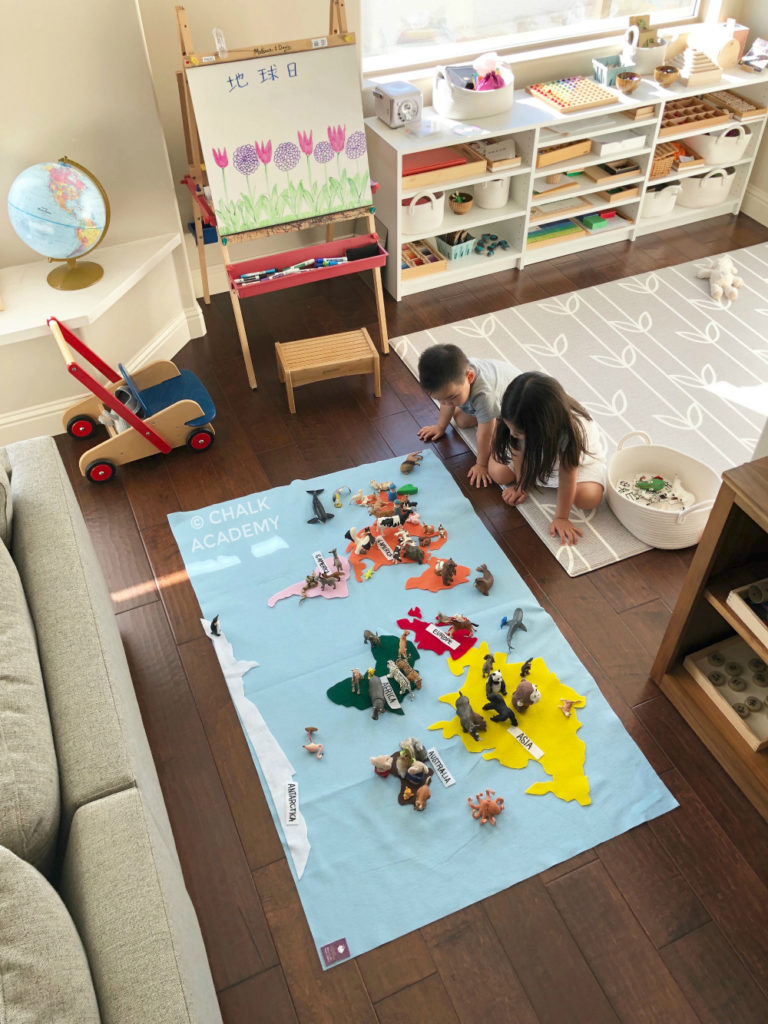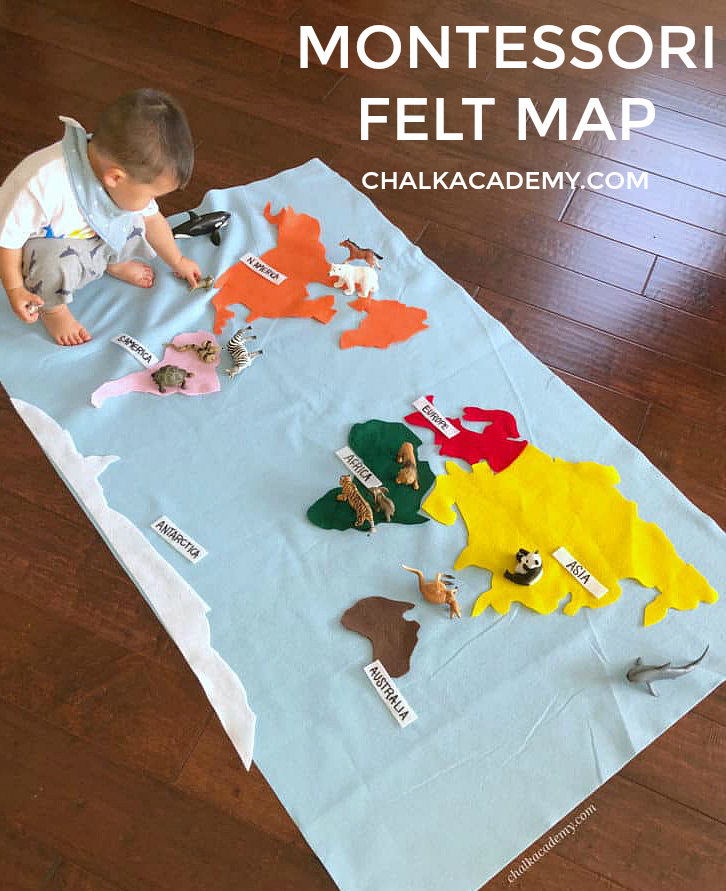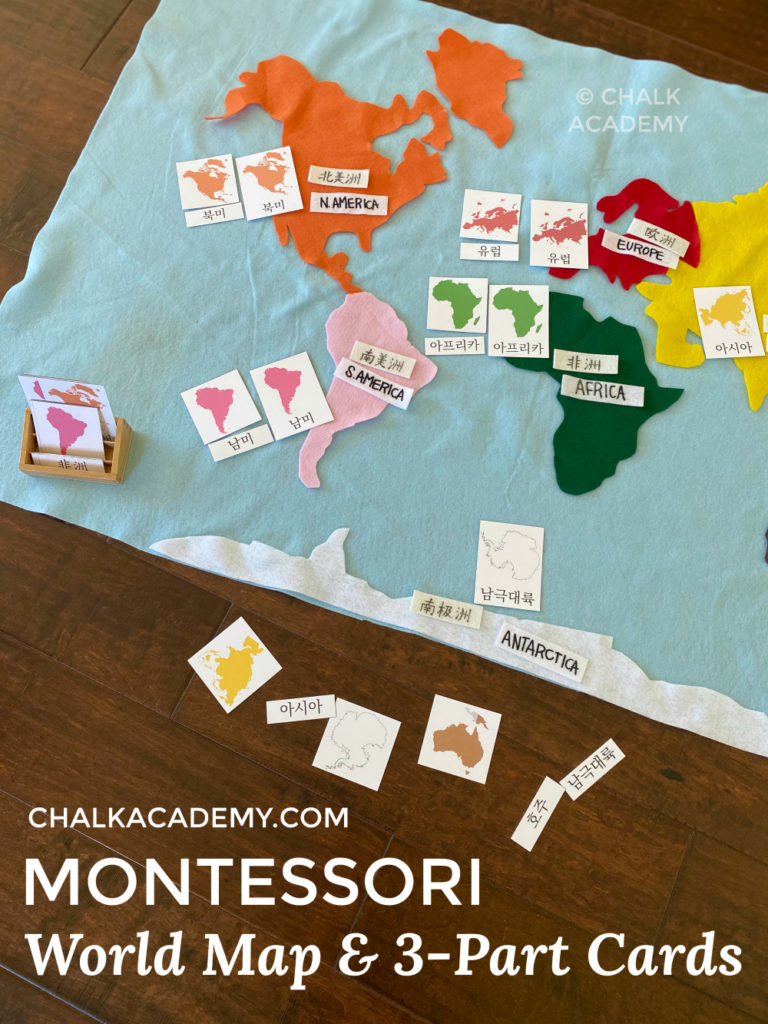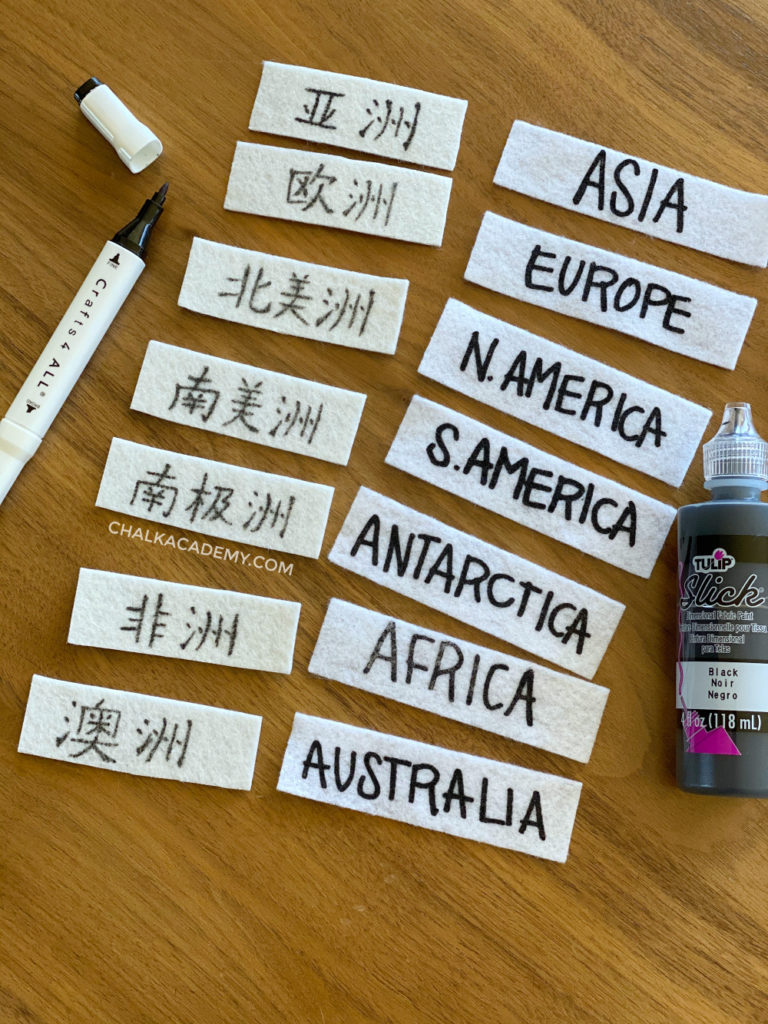Montessori Felt World Map for Kids

I bought this giant Montessori felt world map over a year ago, and my 3-year-old son and 6-year-old daughter have been big fans since! We’ve been using it while reading world map books in Chinese and English and reviewing this printable animals and continents activity.
The large size was immediately impressive and inviting for my kids. Plus, the simple Montessori colors helped them remember continent names in their three languages: English, Chinese, and Korean!

Chalk Academy is reader-supported. Some of the links are affiliate links. When you buy something through an affiliate link, we may earn a very small commission at no additional cost to you. More details here.
What age is this Montessori felt map best for?
It’s ideal for toddlers, preschoolers, kindergartners, and first graders.
Elementary-school kids, like my daughter, are ready for detailed world globes. The Montessori felt that mapping could still be fun with younger siblings or in a classroom.
My 6-year-old daughter can set up the map for her 3-year-old brother. It gives her a chance to lead with confidence!
How my kids are learning geography with the Montessori world map
This giant Montessori felt map is SO inviting! My children can play while learning about the continents and oceans.
Felt naturally adheres to felt, but it’s also easily removable.
Through the Montessori felt map, they’ve learned about where animals live. My kids often play with their toy animals on the felt map! They’ve also had fun pretending to travel worldwide with their craft-stick airplanes.
We also use this large felt map as a hands-on extension of our printable Montessori 3-part continent cards and maps in Chinese, Korean, and English!

Montessori continent colors
The colors of Montessori materials always have an important meaning. Each continent has a standard color to help children remember continent names and locations.

Continent translations in English, Chinese, and Korean
If you’re raising multilingual children like us, here are the seven continents in simplified Chinese, traditional Chinese, Hanyu Pinyin, and Korean.
- Orange: North America
- 北美洲 (Běi měizhōu)
- 북미 (Bugmi)
- Pink: South America
- 南美洲 (Nán měizhōu)
- 남미 (Nammi)
- Green: Africa
- 非洲 / 非洲 (Fēizhōu)
- 아프리카 (Apeulika)
- Red: Europe
- 欧洲 / 歐洲 (Ōuzhōu)
- 유럽 (Yuleob)
- Yellow: Asia
- 亚洲/ 亞洲 (Yàzhōu)
- 아시아 (Asia)
- Brown: Oceania or Austrailia
- 大洋洲 (Dàyángzhōu) or 澳洲/澳洲 (Àozhōu)
- 호주 (Hoju)
- White: Antarctica
- 南极洲 / 南極洲 (Nánjízhōu)
- 남극 대륙 (Namgeug daelyug)

Continent labels
If you’re raising multilingual children like our family, labels are a great way to create a print-rich environment that encourages the minority language.
Our set comes with English continent labels written with black puffy paint. The shop also offers English, Spanish, French, or German labels. You can choose the language at checkout.
To encourage my kids to speak their minority language at home, I created Chinese continent labels.
Since I didn’t have much white felt at home, I was worried about messing up the labels with puffy paint. Instead, I wrote Chinese continent labels with a fabric marker. First, I gently wrote each word with the fabric marker. Then, I dabbed each stroke to darken the words.
I don’t recommend using a black Sharpie marker because the ink will smudge and bleed.

How to store the felt map
Felt is easy to roll up or fold flat to store. I appreciate that this map takes up minimal space in my closet when the kids aren’t using it.
What do you think of the Montessori felt world map?
If you try this activity, please let us know in the comments below! What age(s) are your kid(s), and how did it go? We’d love to hear about your learning experience!